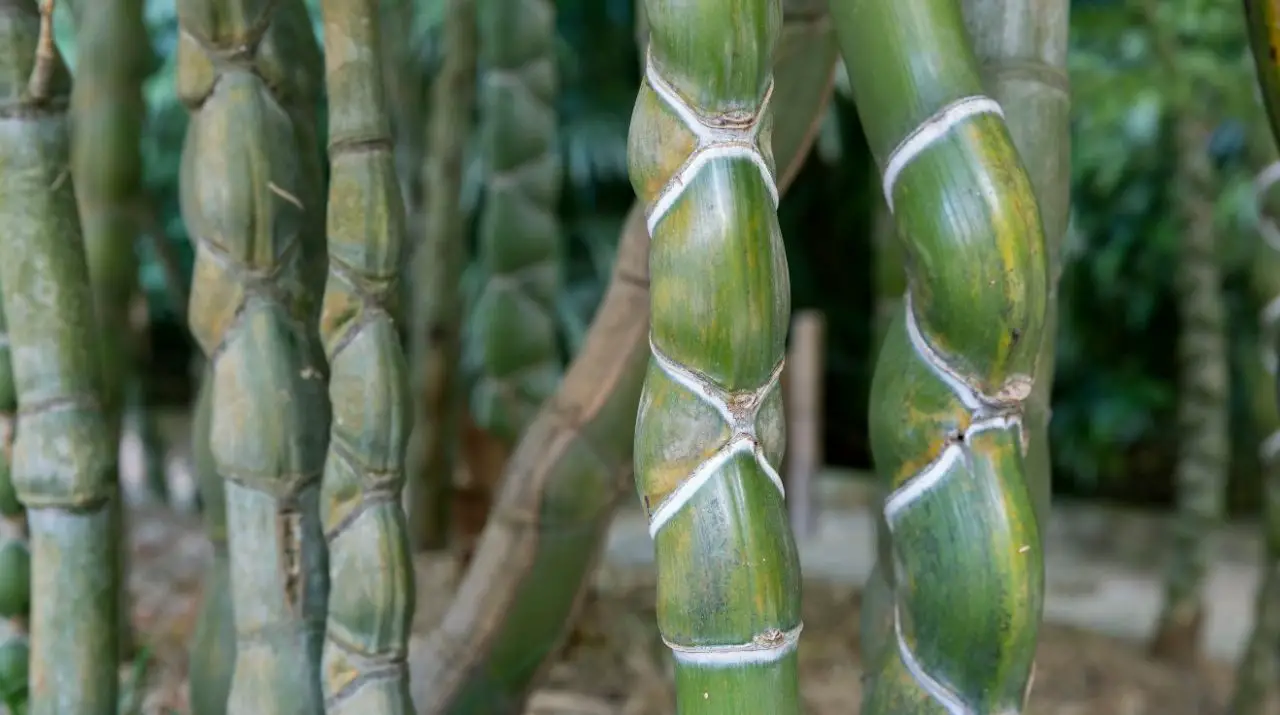
Tylosoid is defined as follows: an outgrowth of parenchyma cells or epithelial cells. In the previous report, tylosoid was found in moso bamboo culm. 1d, e) but were barely discernible in the rhizome (indicated by arrows in Fig. Tylosoids were observed in the culm (indicated by arrows in Fig. One is around the vessels and another is around the phloem. However, vascular bundles near pith hole of the rhizome have two bundle sheaths. This style is consistent with the results in the previous reports. Two of them are on either side of the vessels, one is around the phloem and the other one is around the intercellular space. Vascular bundles near pith hole of the culm have four bundle sheaths. In both organs, the vascular bundles were composed of metaxylem, metaphloem, and bundle sheaths, although the size and number of bundle sheaths differed slightly (Fig. The SEM images of the vascular bundles of the rhizome and culm of moso bamboo are compared in Fig. The sample was examined under a field emission-scanning electron microscope (FE-SEM) (S-4800, Hitachi) coupled with an energy dispersive X-ray analyzer (EDX) (Genesis XM2, EDAX, Japan). We conducted elemental analyses to analyze the composition of grains in bundle sheath cells. Scanning electron microscope-energy dispersive X-ray (SEM-EDX) analysis
Moso inshape software#
Size of observed five tissues and cells which were chosen randomly from SEM images were measured by image analysis software (Motic Image Plus 2.2S, Shimadzu, Kyoto, Japan), and their averages and standard deviations (SD) were calculated. The exposed surface was examined with a SEM (JFC-1600, JEOL, Tokyo, Japan) at an accelerating voltage of 10 kV. After drying for 24 h at 105 ☌, each specimen was mounted on a specimen holder and then coated with gold.

The samples were surfaced with a sliding microtome. The rhizomes, roots, and culms were cut into block samples. Therefore, 4-year-old culms were selected for examination to compare of rhizome and culm. Growth of current year culm is not enough yet and the wall of bundle sheath fiber in it is thin. Four-year-old culms were collected on 20 November 2012 from the same forest. The cleaned rhizomes, roots and culms were stored at −18 ☌ until observation. Nodal roots were selected for examination. The soil was carefully removed from the rhizomes by washing with water. The dominant species in this forest is moso bamboo, with an approximate density of 4000 culms/ha.

This forest is a part of Kyoto Prefectural University, located at 35☃′17″N and 135☄3′30″E. pubescens) were collected on 29 August 2012 from the bamboo forest in Takagamine, Kyoto.

In the present study, to explore the structural features of rhizomes and roots, we examined the anatomical structure of the rhizome and root of the most common bamboo species in Japan, moso bamboo ( Phyllostachys pubescens), using scanning electron microscopy (SEM). In our previous study on the seasonal change of chemical components in rhizomes, the contents of mono- and polysaccharides such as starch, sucrose, fructose, and glucose increased from winter to spring. Thus, it is important to determine their fundamental characteristics to use them effectively. Removing the rhizomes with the culms is an effective method to prevent the spread of bamboo forests, since bamboo propagates from the rhizomes. The spread of bamboo also threatens agricultural lands, and can lead to poor biodiversity and the risk of landslides.

The strong growth of bamboo allows it to invade surrounding forests. In addition, the bamboo forests that are no longer actively managed are spreading rapidly in many areas of Japan. Less detailed information is available on the anatomical structure and chemical composition of bamboo rhizomes and roots, although structural features of bamboo culms and seasonal changes in the contents of biochemical components have been studied. However, the target of these studies is the use of bamboo culms. In recent years, research has focused on the development of bamboo for additional purposes, such as charcoal, vinegar, and fibers, in addition to conventional applications. Bamboo forests in Asia have long been managed to provide bamboo culms, which are used as materials for ornaments and building, and bamboo shoots, which are popular in Asian cuisine.


 0 kommentar(er)
0 kommentar(er)
